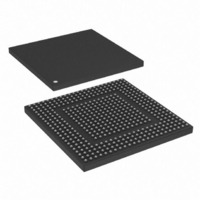MPC8308VMAGD Freescale Semiconductor, MPC8308VMAGD Datasheet - Page 402

MPC8308VMAGD
Manufacturer Part Number
MPC8308VMAGD
Description
MPU POWERQUICC II PRO 473MAPBGA
Manufacturer
Freescale Semiconductor
Datasheets
1.MPC8308VMAGD.pdf
(90 pages)
2.MPC8308VMAGD.pdf
(2 pages)
3.MPC8308VMAGD.pdf
(1170 pages)
4.MPC8308VMAGD.pdf
(14 pages)
Specifications of MPC8308VMAGD
Processor Type
MPC83xx PowerQUICC II Pro 32-Bit
Speed
400MHz
Voltage
1V
Mounting Type
Surface Mount
Package / Case
473-MAPBGA
Product
Network Processor
Data Rate
256 bps
Frequency
400 MHz
Supply Voltage (max)
3.6 V
Supply Voltage (min)
3 V
Supply Current (max)
5 uA
Maximum Operating Temperature
+ 105 C
Minimum Operating Temperature
0 C
Interface
I2C, JTAG, SPI
Mounting Style
SMD/SMT
Lead Free Status / RoHS Status
Lead free / RoHS Compliant
Features
-
Lead Free Status / Rohs Status
Lead free / RoHS Compliant
Available stocks
Company
Part Number
Manufacturer
Quantity
Price
Company:
Part Number:
MPC8308VMAGD
Manufacturer:
FREESCAL
Quantity:
300
Company:
Part Number:
MPC8308VMAGD
Manufacturer:
Freescale Semiconductor
Quantity:
10 000
Part Number:
MPC8308VMAGD
Manufacturer:
FREESCALE
Quantity:
20 000
Company:
Part Number:
MPC8308VMAGD400/266
Manufacturer:
FREESCAL
Quantity:
300
Company:
Part Number:
MPC8308VMAGDA
Manufacturer:
Freescale Semiconductor
Quantity:
10 000
- MPC8308VMAGD PDF datasheet
- MPC8308VMAGD PDF datasheet #2
- MPC8308VMAGD PDF datasheet #3
- MPC8308VMAGD PDF datasheet #4
- Current page: 402 of 1170
- Download datasheet (9Mb)
Enhanced Local Bus Controller
Table 10-13
10.3.1.7
The special operation initiation register (LSOR), shown in
special operation on the indicated bank. Writing to LSOR activates a special operation on bank
LSOR[BANK] provided that the bank is valid and controlled by a memory controller whose mode OP field
is set to a value other than ‘normal operation.’ If eLBC is currently busy with a memory transaction,
writing LSOR completes immediately, but the special operation request is queued until eLBC can service
it. To avoid race conditions between software and a busy eLBC, registers that affect currently running
special operation and LSOR must not be re-written before a pending special operation has been completed.
The UPM and FCM have different indications of when such special operations are completed. The
behavior of eLBC is unpredictable if special operation modes are altered between LSOR being written and
the relevant memory controller completing that access.
UPM special operation modes are set in registers MxMR[OP], see
Registers (MxMR).”
10-22
16–23
24–31
Offset 0x0_5088
Offset 0x0_5088
Reset
Reset
0–31
8–15
Bits
0–7
W
W
R
R
0
0
Name
AS3
AS2
AS1
AS0
D
describes MDR[D].
Special Operation Initiation Register (LSOR)
In UPM mode, D is the data to be read or written into the RAM array when a write or read command is
supplied to the UPM (M x MR[OP] = 01 or M x MR[OP] = 10).
In FCM mode, AS3 is the fourth byte of address sent by a custom address write operation, or the fourth byte
of data read from a read status operation.
In FCM mode, AS2 is the third byte of address sent by a custom address write operation, or the third byte of
data read from a read status operation.
In FCM mode, AS1 is the second byte of address sent by a custom address write operation, or the second
byte of data read from a read status operation.
In FCM mode, AS0 is the first byte of address sent by a custom address write operation, or the first byte of
data read from a read status operation.
AS3
FCM special operation modes are set in FMR[OP], see
MPC8308 PowerQUICC II Pro Processor Reference Manual, Rev. 0
Figure 10-10. FCM Data Register in FCM Mode (MDR)
Figure 10-9. UPM Data Register in UPM Mode (MDR)
7
8
Table 10-13. MDR Field Description
AS2
All zeros
All zeros
15 16
Description
D
Figure
10-11, is used by software to trigger a
AS1
Section 10.3.1.4, “UPM Mode
Section 10.3.1.17, “Flash
23 24
Freescale Semiconductor
Access: Read/Write
Access: Read/Write
AS0
31
31
Related parts for MPC8308VMAGD
Image
Part Number
Description
Manufacturer
Datasheet
Request
R
Part Number:
Description:
Development Boards & Kits - Other Processors MPC8308-NSG
Manufacturer:
Freescale Semiconductor
Datasheet:

Part Number:
Description:
MCU, MPU & DSP Development Tools For MPC8308 Ethernet USB I2C SPI
Manufacturer:
Freescale Semiconductor
Datasheet:

Part Number:
Description:
MCU, MPU & DSP Development Tools For MPC8308 Ethernet USB 32bit
Manufacturer:
Freescale Semiconductor
Datasheet:
Part Number:
Description:
Mpc8308 Powerquicc Ii Pro Processor Hardware Specification
Manufacturer:
Freescale Semiconductor, Inc
Datasheet:

Part Number:
Description:
BOARD REF DESIGN MPC8308
Manufacturer:
Freescale Semiconductor
Datasheet:

Part Number:
Description:
MPC8308 PowerQUICC II Pro Processor Hardware Specification
Manufacturer:
FREESCALE [Freescale Semiconductor, Inc]
Datasheet:
Part Number:
Description:
Microprocessors - MPU E300 ext tmp Qual266
Manufacturer:
Freescale Semiconductor
Datasheet:
Part Number:
Description:
Microprocessors - MPU E300 ext tmp Qual333
Manufacturer:
Freescale Semiconductor
Datasheet:
Part Number:
Description:
Microprocessors - MPU E300 EXT TEMP PB 400
Manufacturer:
Freescale Semiconductor
Datasheet:
Part Number:
Description:
Microprocessors - MPU E300 MP Pb 266
Manufacturer:
Freescale Semiconductor
Datasheet:
Part Number:
Description:
Microprocessors - MPU E300 MP Pb 400
Manufacturer:
Freescale Semiconductor
Datasheet:
Part Number:
Description:
Microprocessors - MPU E300 MP Pb 333
Manufacturer:
Freescale Semiconductor
Datasheet:
Part Number:
Description:
Manufacturer:
Freescale Semiconductor, Inc
Datasheet:
Part Number:
Description:
Manufacturer:
Freescale Semiconductor, Inc
Datasheet:
Part Number:
Description:
Manufacturer:
Freescale Semiconductor, Inc
Datasheet:











